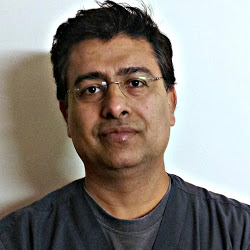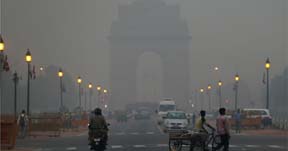 Is Delhi, Capital of India, a sustainable city?
Is Delhi, Capital of India, a sustainable city?
When we talk of sustainable cities, a recent survey result comes handy to initiate a dialogue on Delhi. The capital of India comes at disgusting 49th number out of 50 in the Arcadis Sustainable Cities Index done recently by a Dutch group. Frankfurt in Germany won the top slot followed by London. Chicago won the 19th rank. Mumbai comes at 47th position.
Three categories of criteria were devised to index the cities: people, environment and economy. Various factors were taken into account such as income inequality, health indices, level of greenery, property prices, ease of doing business, GDP, etc.
London lost the first slot to Frankfurt not due to environmental reasons, but mainly due to one criterion: high property prices.
If we look at Delhi, its obnoxiously high property prices with a signature lining of brazen and broken roads crying for green dots makes you wonder: what kind of race is Delhi into?
Sustainability is a holistic term. It encompasses humans and its ecosystem in peace with each other.
Today Delhi is a living testimony of mass (teeming population), misery (in the name of development) and mockery (of planning)!
Ironically, Delhi is a cradle of aspirations for two important politicians of our country: We have a forward-looking Prime Minister in the name of Narendra Modi who never tires of talking of vikaas (development) and swacchta (sanitation) and Arvind Kejriwal who bulldozed his way into Delhi secretariat by selling a vision of Delhi through Delhi Dialogue before elections and soon afterwards, constituting Delhi Dialogue Commission.
Alarming situation
However, the situation in Delhi is really alarming. Delhi is a tiny dot on the Indian map with just 1400 square km in area but houses 1.7 crore human lives. The city with the highest density in India is in a geographic and demographic turmoil.
Is there any realistic plan to de-congest the city of its people?
The infrastructure of Delhi is in shambles. There were 20 million vehicles in India in 1991 and the number jumped to 140 million in 2011. The ever-increasing pace of vehicular congestion coupled with inadequate public transport system continues to be a nightmare for Delhi. Roads and domestic streets are cluttered with vehicles.
Is there a comprehensive solution to fix this problem?
Poor quality of roads, dust all around and lack of greenery, poor sense and enforcement of traffic rules make a mockery of Indian civic sense and intelligence. Roads are the face of a city. But roads in Delhi present a pathetic story of dilapidation, dust, dirt and ‘dard’ of impoverished human spillover. The footpaths stuffed with people and blocked with unaccounted vendors and small businesses create a situation of asphyxia. The constant noise around adds to the misery.
Delhi is the place to push up the nation’s GDP to slashing corporate taxes, to boost enterprise to ‘Make in India’ slogans to ‘Swacchtaabhiyaan.’ However, the landlocked city itself is sick: the quality of air that we breathe is polluted beyond acceptable levels.
The media noted with alacrity when the U.S. Secretary of State John Kerry lit lamps to celebrate Deepawali in the power corridors of Washington DC, but we seemed to miss out when last October he issued an advisory to his Embassy in Delhi, cautioning not to let children play outside since the air was too polluted.
The vehicular traffic, poor pollution regulation and insufficient greening have contributed to the toxic and impure air. The poor quality of air in Delhi tells us that we are in the grip of a health crisis. But since the morbidity and mortality attributable to air pollution is not grossly visible and directly quantifiable, the gravity of the situation is not realized. Swine flu outbreak may make waves, but Delhi’s toxic air is taking its toll in an insidious manner. Just to give you a comparison, the total suspended particulate (TSP) in Chicago is about 60 micrograms per cubic meter (national U.S. average is 40). The annual average Suspended Particulate Matter (SPM) in Delhi is more than 500 (for Goa, it is 100).
Let us look at another environment index. As the name indicates, the air quality index (AQI) conveys quality of the air. It is reported in a range of 0 to 500.The average AQI is typically under 40 in USA denoting a safe range from health point of view. The AQI in Delhi as declared by the US embassy in Delhi in the aforementioned case was 255.
Delhi is also witness to high levels of benzene, nitrogen dioxide, sulphur dioxide, and carbon monoxide. Dense and poisonous air is associated with a variety of medical disorders ranging from skin, allergy, respiratory, cardiac illnesses and cancers.
Looking at the results of Arcadis survey, the road to making Delhi a better city is next to impossible unless some drastic and reformative actions are taken. Delhi needs to be resuscitated in a fast yet steady manner. Rather than patch up work, a collaborative and comprehensive development agenda involving cooperation between the Center and the State needs to be put in place to develop a better Delhi.
The author is a Chicago-based columnist. Email: pedia333@gmail.com Twitter@DrMunishRaizada
Dr Munish Kumar Raizada






